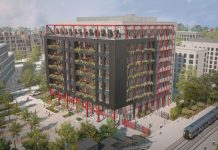Take-up of commercial office space in Bristol for 2013 is on course to far exceed the average over the last five years, according to Jones Lang LaSalle.
So far this year, office space take-up stands at nearly 430,000 sq ft – nearly 18,500 sq ft more than the figure for the whole of 2012.
The average annual take-up figure for the last five years was 445,900 sq ft and Jones Lang LaSalle is predicting that 2013 figures will exceed this by around 20 per cent.
Ian Wills, director at Jones Lang LaSalle, said: “There has been a lot of talk for a long time about green shoots but we are finally beginning to see the hard facts which show that confidence and activity is returning to the market.
“If the market continues to perform as it has done over the last few months, we expect take-up to reach around 530,000 sq ft by the end of the year, and this is a strong indicator that the market is now turning a corner.”
The most significant deal in the last three months is Veale Wasbrough Vizards which is taking 39,000 sq ft in Narrow Quay House on the Harbourside. Work to refurbish the space starts next month ahead of the law firm’s relocation in 2015.
Ian Wills, who advised on the deal, said: “This shows there is growing confidence among occupiers to think ahead and make an upfront investment to ensure they secure high quality accommodation in the right location.
“It’s a positive indicator that companies are prepared to make the sorts of decisions that wouldn’t have been made this time last year.”
Other headline deals from 2013 include Bristol City Council buying 100 Temple Street, Imperial Tobacco building its own 85,000 sq ft headquarters in Winterstoke Road and Barclays Bank taking space at Bridgewater House.
Ian continued: “With the change of planning rules earlier this year, some of the poorer office stock is going to be converted into private and student accommodation. This will reduce supply and mean that landlords will be incentivised to upgrade the remaining office stock to ensure they are well positioned to capitalise on demand from occupiers.”




















